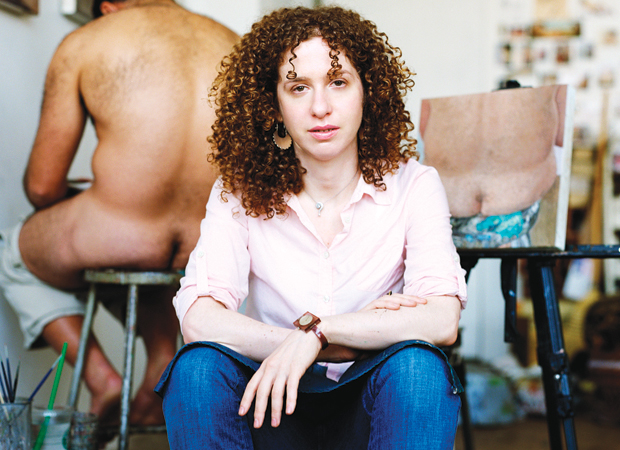
Inside the mind of Ellen Altfest
Exploring the creative processes of artists featured in Vitamin P2
__ Who are you?__
I'm a painter from New York City.
What’s on your mind right now?
I'm thinking about my show, The Bent Leg which just opened in London, what my next work will be and about finding a new studio since my studio building has been sold. Right now I'm in Belgium looking at the Flemish Primitives.
How do you get this stuff out?
It's a lengthy process. I have an idea, then look for a model who physically fits the painting I have in mind. After I find someone, I spend a week or so working out the composition through preparatory drawing until it feels right and is correct. Then I order the canvas and transfer the drawing onto it.
 Ellen Altfest, Torso (2011)
Ellen Altfest, Torso (2011)How does it fit together?
Each painting presents its own specific challenge. There is a lot of measuring and colour mixing. There are often mistakes along the way; it's not a straight path. I work until the painting becomes the thing in front of me, or feels complete in itself. This usually takes between four and 15 months.
What brought you to this point?
I wanted to make paintings of men for a long time before I did. I felt there was both something I wanted to say about men and something I had to learn. But I had to do it in my own way and that was something that evolved over time. Over the years the work has become more focused, detailed and smaller. This is in part because the paintings are one-to-one scale and the parts of the body are small. I began using tiny brushes in order to paint hair and pores, and through this the level of detail has become condensed.

Ellen Altfest, Reclining Nude (2007)
Can you control it?
The work can be a struggle to impose control over something chaotic. I try to keep the subject still and unchanged through the months long process. But plants grow and models' plans change and the job is physically demanding. I have found that there is often a point in a painting, about midway through, that the model threatens to quit. I work entirely from observation and I always fear this moment, which could result in the painting being left unfinished. I also make most of my work with natural light so the weather plays a big role in whether I can work on a painting on a given day. In the last year, watercolours have become my back-up plan for rainy days. However, it's the working from life, responding to an actual thing or person, the quality of daylight and all that visual information, that stimulates me as an artist.
__ What's next?__
I am thinking a lot about how to make the male figure present but less central in the paintings. I would like to move the men more towards the background, where they can exist as a texture or accent. This way they become one element of the work, part of a larger vocabulary of form.
 Ellen Altfest, Sleeping Man (2007)
Ellen Altfest, Sleeping Man (2007)Get inside the mind of more artists from Vitamin P2 here:
Inside the mind of Glenn Sorensen
Inside the mind of Serban Savu
Inside the mind of Xylor Jane
Inside the mind of Antonio Ballester Moreno
Inside the mind of Milena Dragicevic
Inside the mind of Lesley Vance
Inside the mind of Li Shurui
Sign up to the Phaidon newsletter to get future updates.